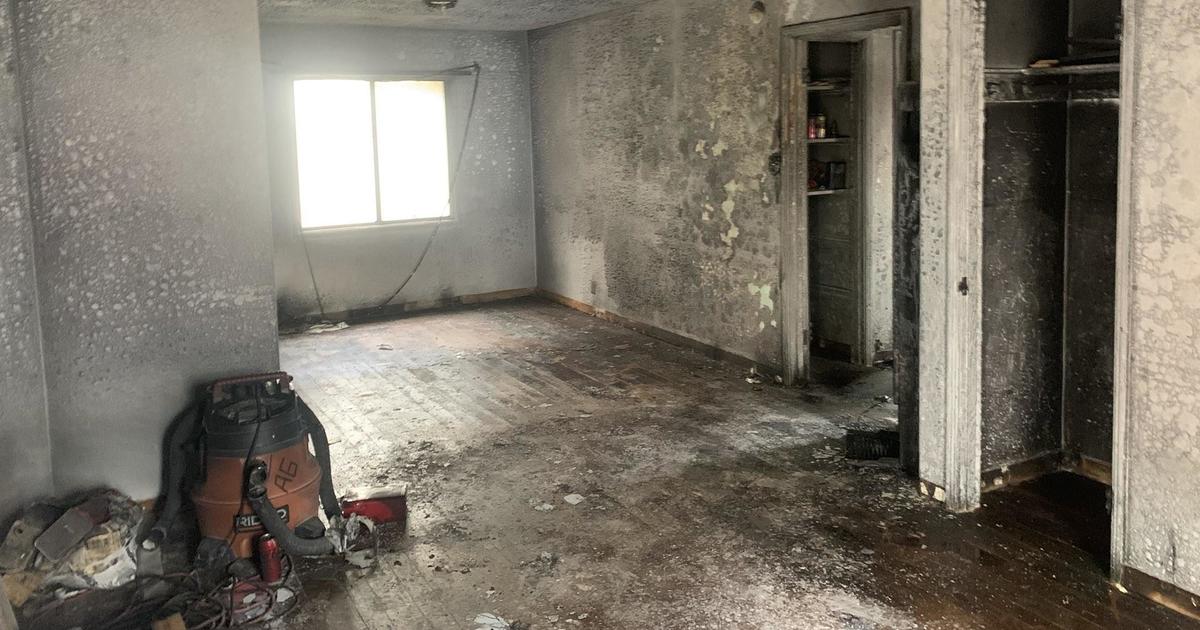Pilot Program Offers Indoor Air Monitors To East Bay Asthma Patients
(KPIX 5) -- Alameda County is rolling out a pilot program to help parents control indoor pollutants.
The Public Health Department is lending small indoor air monitors to 250 families who have had an emergency room visit in the past six months due to asthma.
Asthma triggers are all around, sometimes obvious, like the black smoke pouring out of an oil refinery flareup. But more often than not, those triggers are hidden: dust mites, pollen, chemical fumes - invisible particles inside your home.
Four-year-old Kerbyn's coughs are a sign the air quality is bad. During an asthma attack, his mother Nadia Soto says his chest tightens and he can barely breathe. He has been rushed to the hospital emergency room about once a month since he was a toddler. "I always cry when he is sick," said Soto. "I have to be with him all night. I can't sleep. I feel like if he's coughing or perhaps can't breathe … and I don't hear him, something's going to happen."
That helplessness is felt by countless parents. 72,000 California children visited the ER for asthma in 2012, the most recent numbers available.
"It's a hard number to reduce," said Children's Hospital nurse Mindy Benson. She estimates that 80 percent of the asthma patients they see are getting sick from pollutants inside their homes.
""We're not just trying to say that you don't clean your house well, we're talking about things that no one would even notice in the air," said Benson. Those things can be fumes from cleaning products, such as bleach, or smoke from cooking on the stove.
Alameda County health officials hope the use of Speck indoor air monitors, made by Pennsylvania-based Airviz, Inc., will offset the costs of treating asthma patients seeking emergency or urgent care.
"The Speck Air Monitor can do dust, it can do smoke, it can do pollen," said Sandra Rodriguez, who makes home visits for Alameda County Public Health.
The device monitors levels of small particles, and the display goes from green to flashing red when the air quality is bad. While it does not measure mold, a common problem in older Bay Area housing - it does reveal how everyday activities can trigger an asthma attack. Rodriguez recalled how one mother told her,"I had my kids say, 'momma, momma, it's turning red' because I was frying something."
Soto's family is participating in the pilot program and has now been using the monitor for a month. She said she can see how a light dusting or simply vacuuming can make the monitor levels shoot up. Cleaning the house to help her son might actually be triggering his asthma. "There's no one thing that can cause an asthma trigger. It's a combination of things," said Mindy Benson. "But here's a way we can actually reduce that."
In the meantime, Soto has made some household changes. No vacuuming with doors and windows shut. When she's cooking, her son goes outside. And no more using harsh chemicals, like bleach, for cleaning. "Now I just use water for the floor, and baking soda," she said.
The pilot program is being watched across the country to see if it can reduce asthma attacks in children. Speck air monitors cost between $150 to $200 dollars apiece. Eventually the county hopes to make some available on loan from local public libraries, as they are in some cities already.



